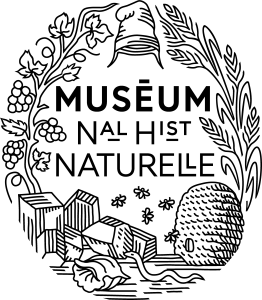 Aerial photo of Paris by night
Aerial photo of Paris by night
Night has always been a source of fear in humans and by using lights they managed to bypass it. In France, cities started to light their streets using torches during the 17th century as a way to deter people from doing criminal or suspicious activities. Even today, the night is seen as a dangerous time and city lights are used to make the city safer but also to make people feel safe.
However, darkness is essential for many species that live or feed at night and we know today that anthropogenic light sources disturb animals and plants: reducing their territories, disorienting them, or even decreasing their hunting abilities (Hölker et al, 2010). Light pollution could even be a threat to pollination because of its impact on night insects that play a huge role in pollination networks (Knop et al., 2017).
The full impact of artificial light augmentation is still not fully comprehended but it could have many cascading effects and affect even daylight species (Bennie et al., 2015). Light pollution is one of the most pervasive forms of environmental alteration since it affects areas hundreds of kilometers away from the light source. For example, the light dome of Las Vegas is seen from the Death Valley National Park which is 200 km away from it.
Light pollution also affects humans, for example, studies have shown that humans need the natural alternation of day and night to regenerate their immune system (Chepesiuk, 2009). And beyond health reasons, more than 80% of the world and 99% of the US and European population lives under light-polluted skies (Falchi et al., 2016), which means that they cannot enjoy the magnificence of a clear night sky.
As the discussion for less light in cities is starting to arise, many are afraid of the impact it could have on city dwellers. Indeed, many cities are thinking of “switching off” their lights during the night for economic reasons or to reduce their impacts on climate change and the environment.
Many people are against these policies since reducing city lights during the night could lead to spatial injustice. Indeed, if people feel afraid, they will not go out during the night and this situation is especially true for women for whom night is already seen as an unsafe place (Condon et al., 2007). Reducing city lights could also cause different issues like safety problems regarding circulation.
So what should we do? Are we going to have to choose between biodiversity and security?
Perhaps we do not have to choose, we just need to change the way we light our cities. For example, a lot of light pollution during the night does not come from street lights but from lighted publicities or storefronts. By suppressing those we can reduce our environmental impact. Lights could also be directed towards the ground with “mushroom” lights or other lighting fixtures that shield the light source to minimize glare and light trespass and we can also install motion detectors to only switch on the light when someone is passing (International Dark-Sky Association, 2012).
Many cities are trying new solutions to reduce their light pollution. Like Strasbourg, which chose to light it’s street using soft light (Service égalité intégration inclusion -Mairie de Paris, 2016) or Nantes, which tried on a motion and presence detection system to light one of its bridges. Those policies could even reach regional or national levels with the creation of a dark ecological network (Sordello, 2017).
This article was written by Mariem EL Harrak in collaboration with Amélie Dakouré, Léa Monot, and Marguerite Ollivon, all Master’s students in the Museum’s “Society and Biodiversity” specialization.
Bibliography:
Bennie, Jonathan, Thomas W. Davies, David Cruse, Richard Inger, et Kevin J. Gaston.
2015. « Cascading Effects of Artificial Light at Night: Resource-Mediated Control of
Herbivores in a Grassland Ecosystem ». Philosophical Transactions of the Royal
Society B: Biological Sciences 370 (1667): 20140131.
Chepesiuk, Ron. 2009. « Missing the Dark: Health Effects of Light Pollution ». Environmental Health Perspectives 117 (1).
Condon, Stéphanie, Marylène Lieber, et Florence Maillochon. 2007. « Feeling Unsafe in Public Places: Understanding Women’s Fears ». Revue française de sociologie 48:101‑28.
Falchi, Fabio, Pierantonio Cinzano, Dan Duriscoe, Christopher C. M. Kyba, Christopher D. Elvidge, Kimberly Baugh, Boris A. Portnov, Nataliya A. Rybnikova, et Riccardo Furgoni. 2016. « The New World Atlas of Artificial Night Sky Brightness ». Science Advances 2 (6): e1600377.
Hölker, Franz, Christian Wolter, Elizabeth K. Perkin, et Klement Tockner. 2010. « Light Pollution as a Biodiversity Threat ». Trends in Ecology & Evolution 25 (12):
681‑82.
International Dark-Sky Association. 2012. Fighting Light Pollution: Smart Lighting
Solutions for Individuals and Communities. Mechanicsburg, PA: Stackpole Books.
Knop, Eva, Leana Zoller, Remo Ryser, Christopher Gerpe, Maurin Hörler, et Colin
Fontaine. 2017. « Artificial Light at Night as a New Threat to Pollination ». Nature
548 (7666): 206‑9.
Service égalité intégration inclusion. 2016. « Guide référentiel : Genre & espace public». Mairie de Paris. https://api-site.paris.fr/images/85756
Sordello, Romain. 2017. « Pollution lumineuse et trame verte et bleue : vers une trame noire en France ? » Territoire en mouvement, n o 35 (novembre).
